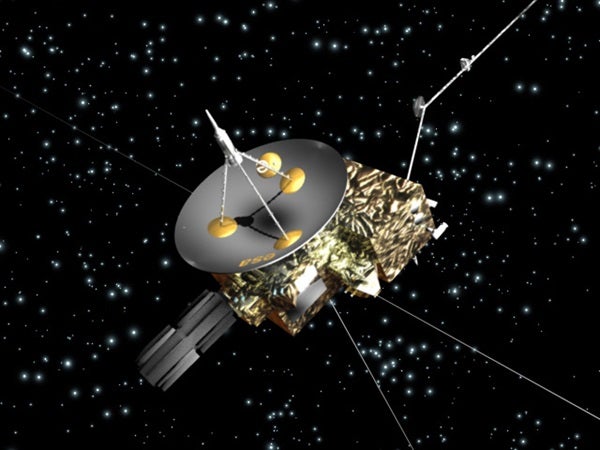Our solar system moves perpetually through the Milky Way. For approximately 100,000 years, it has been passing through the Local Interstellar Cloud, a cloud of interstellar matter measuring about 30 light-years in diameter. Microscopic dust particles from this cloud make their way into the interior of our solar system. For researchers, they are messengers from the depths of space and provide basic information about our more distant cosmic home. In the past, several spacecraft have identified and characterized these “newcomers.” These spacecraft include Galileo and Cassini, which traveled to the gas planets Jupiter and Saturn, as well as the mission Stardust, which in 2006 returned captured interstellar dust particles to Earth.
“Nevertheless, the data from Ulysses that we have now evaluated [for] the first time in their entirety are unique,” said Harald Krüger from MPS. For 16 years, the instrument examined the stream of particles from outside our solar system almost without interruption. Compared to this, other missions provided only snapshots. “In addition, Ulysses’ observational position was optimal,” said Veerle Sterken from the ISSI. Ulysses is the only spacecraft so far that has left the orbital plane of the planets and has flown over the Sun’s poles. While interplanetary dust produced within our planetary system is concentrated in the orbital plane, interstellar dust can be measured well outside this plane.
“Under the influence of the Sun and the interplanetary magnetic field, the dust particles change their trajectories,” said Peter Strub from MPS. The gravitational pull and radiation pressure of the Sun, as well as the interplanetary magnetic field within the solar system, change the particles’ flight direction and speed, depending on their masses. “Since the Sun and particularly the interplanetary magnetic field are subject to an approximately twelve-year cycle, only long-term measurements can truly unravel this influence.”
From the data of the more than 900 particles, the researchers could extract the most detailed information on mass, size, and flight direction of interstellar dust so far. Computer simulations helped to understand the various contributions of the Sun and the interplanetary field and to separate them.
The study confirms earlier analyses, according to which the interstellar dust always traverses the solar system in approximately the same direction. It corresponds to the direction in which the solar system and the Local Interstellar Cloud move relative to each other. “Minor deviations from this main direction depend on the mass of the particles and the influence of the Sun,” said Strub.
In 2005, however, a different picture emerged: The far-traveled particles reached the dust detector from a shifted direction. “Our simulations suggest that this effect is likely due to the variations of the solar and interplanetary magnetic field,” said Sterken. “Altered initial conditions within the Local Interstellar Cloud are likely not the reason.”
The researchers also took a close look at the size and properties of the particles. While the majority of the dust particles has a diameter of between a half and 0.05 micrometer, there are also some remarkably large specimens of several micrometers. “Efforts to characterize the dust outside our solar system with the help of ground-based observations from Earth have not revealed such large sizes,” said Krüger. By contrast, the very small particles which astronomers typically find with telescopes cannot be found in Ulysses measurements. As computer simulations show, compared to their mass, these tiny particles become strongly electrically charged within the solar system and are deflected and thus filtered out of the main interstellar dust stream.
The simulations also indicate that the exotic dust has a low density and is therefore porous. “Ulysses’ dust detector cannot measure the particles’ inner structure directly,” said Sterken. “However, on the computer we can try out different densities. With porous particles, the observational data can be reconstructed best.”
The composition of the interstellar particles cannot be determined with the dust instrument onboard Ulysses. However, this is possible with the successor instrument on the Cassini spacecraft developed at the Max Planck Institute for Nuclear Physics in Heidelberg. Its measurements will allow for completely new insights into the origin and evolution of interstellar particles. Measurements with dust detectors thus provide a look into the Local Interstellar Cloud, which can only be studied by observations from Earth otherwise. In the future, dust researchers want to propose space missions to the European Space Agency to investigate interstellar dust.










